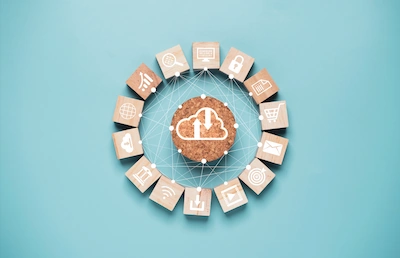In a world where IT and the Internet are increasingly present, companies are looking for qualified professionals to help them navigate this new environment. In this blog, we are going to look at the skills and qualifications needed to find a job in the computer and internet field.
We will also look at the different options available to workers in this sector. We will see what are the skills and qualifications needed to apply for jobs in the field of computing and the Internet. We'll also look at the different types of jobs available, along with the pros and cons of each type of job.
Finally, we'll look at the different ways companies can find qualified professionals to help them navigate this new environment. We'll see how companies can use social networks, job boards and search tools to find qualified candidates. We'll also look at the different ways companies can use these tools to recruit skilled professionals.
Here are some things to remember about computing and the internet in 2023:
- Information and communication technologies (ICT) will be even more integrated into people's daily lives.
Information and communication technologies (ICT) will be increasingly integrated into people's daily lives. This means that technologies such as computers, smartphones, tablets, the Internet, social networks, applications, connected objects, etc. will play an increasingly important role in everyday life.
It could impact the way people work, communicate, play, shop, and even interact with their surroundings. ICT could facilitate distance communication, home working, e-learning and access to information and services anytime and anywhere.
However, it could also present challenges such as privacy, data security, access to adequate skills and knowledge to use ICT effectively, and overreliance on technology.
In sum, the text emphasizes that ICT will play an increasingly important role in people's daily lives, and that this could have both advantages and disadvantages.
- Artificial intelligence (AI) and machine learning (ML) technologies will be widely used to improve business efficiency.
Artificial intelligence (AI) and machine learning (ML) technologies will be widely used to improve business efficiency. This means that companies could use these technologies to automate certain tasks, improve decision-making, and optimize business operations.
The use of AI and ML could help companies analyze large amounts of data and detect trends or patterns that would be difficult for humans to spot. Companies could also use AI and ML to create chatbots for customer service, recommendation systems for marketing, fraud detection software for financial security, and many other applications.
However, the use of AI and ML can also raise privacy and security concerns, as well as concerns about the social and economic impacts of the technology, including on jobs. It is therefore important that companies consider these factors in their use of AI and ML.
In sum, the text emphasizes that the use of AI and ML can offer significant advantages to companies, but that it must be done with caution and taking into account the potential consequences of the technology.
- 5G networks will be widely deployed, offering faster connection speeds and better coverage.
5G networks will be widely deployed, offering faster connection speeds and better coverage. This means that users will be able to enjoy faster and more reliable connectivity for their devices, such as smartphones, tablets and computers.
The deployment of 5G networks will also support new applications that require fast and stable connectivity, such as augmented and virtual reality, autonomous vehicles, IoT sensors, telemedicine applications, online games and many others. Again. These apps will be able to offer more advanced features and an improved user experience thanks to the faster speeds and better coverage offered by 5G networks.
However, the rollout of 5G networks can also raise health, safety and environmental impact concerns. Concerns about exposure to radio waves and data security must be taken into account to ensure that the deployment of 5G networks is done in a responsible manner.
In sum, the text stresses that the deployment of 5G networks will improve user connectivity, support new applications and stimulate innovation, but that this must be done in a responsible way by taking into account relevant concerns.
- Blockchain technologies will be more widely used to store and secure data.
Blockchain technologies will be more widely used to store and secure data. This means that companies and organizations could use blockchain technology to store and manage data in a decentralized and secure way, without the need for a centralized intermediary.
Data stored on the blockchain is secured using sophisticated encryption algorithms and consensus mechanisms that verify data integrity. In addition, blockchain allows changes to data to be tracked and audited in a transparent and immutable way.
The potential applications of blockchain for data storage and security are numerous, especially in the financial, healthcare, logistics and real estate sectors. For example, banks could use blockchain to store customer data securely, and hospitals could use blockchain to store medical records in a transparent and accessible way.
However, using blockchain can also raise privacy, cost, and complexity concerns. Companies should therefore carefully assess whether blockchain technology is the best solution for their data storage and security needs.
In sum, the text emphasizes that blockchain technologies offer potential benefits for data storage and security, but this must be done responsibly and taking into account relevant concerns.
- Internet of Things (IoT) technologies will be more widely used to connect physical objects to the Internet.
Internet of Things (IoT) technologies will be more widely used to connect physical objects to the Internet. This means that physical objects, such as household appliances, vehicles, industrial equipment, sensors and meters, will be able to communicate with each other and with computer systems via the Internet.
The Internet of Things makes it possible to collect real-time data from physical objects and use it to make intelligent decisions. For example, a company could use IoT sensors to monitor temperature and humidity in a supply chain to optimize product storage conditions. Similarly, a smart city could use IoT sensors to monitor traffic and pollution and optimize circulation.
Using IoT can also help businesses improve efficiency and reduce costs by automating processes, remotely monitoring equipment, and identifying problems before they occur. However, the use of IoT can also raise security, privacy, and ethical concerns.
In sum, the text emphasizes that Internet of Things technologies offer potential benefits for real-time data collection and intelligent decision-making, but that this must be done responsibly and taking into account the concerns relevant.
- Augmented Reality (AR) and Virtual Reality (VR) technologies will be more widely used to improve user experience.
Augmented Reality (AR) and Virtual Reality (VR) technologies will be more widely used to improve user experience. This means businesses will be able to use these technologies to deliver more immersive and interactive experiences to their customers.
Augmented reality consists of superimposing digital information, such as images, videos or sounds, on the real world using a mobile device or special glasses. For example, an interior design company could use AR to let customers see what a sofa would look like in their living room before buying it.
Virtual reality, on the other hand, creates an all-digital environment in which users can interact. For example, a tourism company could use VR to allow its customers to virtually visit a destination before deciding to book a trip.
AR and VR technologies can also be used for training and simulation. For example, a maintenance company could use VR to train its employees to repair equipment without risk of damage.
However, using these technologies can also raise concerns about cost, compatibility, safety, and accessibility for people with disabilities.
In sum, the text emphasizes that augmented reality and virtual reality technologies offer potential benefits to improve the user experience, but that this must be done responsibly and taking into account relevant concerns.
- Data analytics (DA) technologies will be more widely used to analyze and interpret data.
Data analytics (DA) technologies will be more widely used to analyze and interpret data. This means that companies will be able to use these technologies to extract useful information from large amounts of data.
Data analysis is the application of statistical and computational techniques to extract information from data. This can include analyzing structured data, such as numbers and tables, as well as unstructured data, such as text and images.
Using data analytics can help businesses make more informed decisions by providing them with accurate and relevant information. For example, a retail company could use data analytics to identify shopping trends and tailor their marketing strategies accordingly.
Data analytics technologies include techniques such as machine learning, data mining, and data visualization. Machine learning allows computer systems to learn from data and make decisions based on that data. Data mining is the discovery of patterns and relationships in data. Data visualization is the presentation of data graphically for better understanding.
However, the use of data analytics can also raise privacy and data security concerns, as well as ethical concerns related to the use of data.
In sum, the text emphasizes that data analytics technologies offer potential benefits in helping companies make more informed decisions, but this must be done responsibly and taking into account relevant concerns.
The job market is constantly changing and technology can play an important role in finding employment. Nowadays, many online platforms have sprung up to help job seekers find jobs that match their skills and work experience.
One of these platforms is Askaide, which offers its services free of charge to help job seekers find job opportunities that match their profile. Using the latest technologies such as data analytics and artificial intelligence, Askaide is able to match candidate profiles to available job vacancies.
With these advanced technologies and free online training resources, Askaide is a convenient and accessible way for job seekers to find work opportunities that match their profile and develop their professional skills. If you're looking for a job, it's worth exploring the options Askaide offers and using the latest technology to help you achieve your professional goals.
In conclusion , the article highlights the growing importance of computers and the Internet in people's daily lives and businesses, as well as the skills and qualifications required to work in this ever-changing field. It also discusses the pros and cons of using technologies such as ICT, AI and ML, and 5G networks. It is essential that companies take into account the potential implications of these technologies on privacy, data security and employment. Ultimately, it is important to recognize that computing and the Internet will continue to play a vital role in how we live and work in the future.
Share this article






